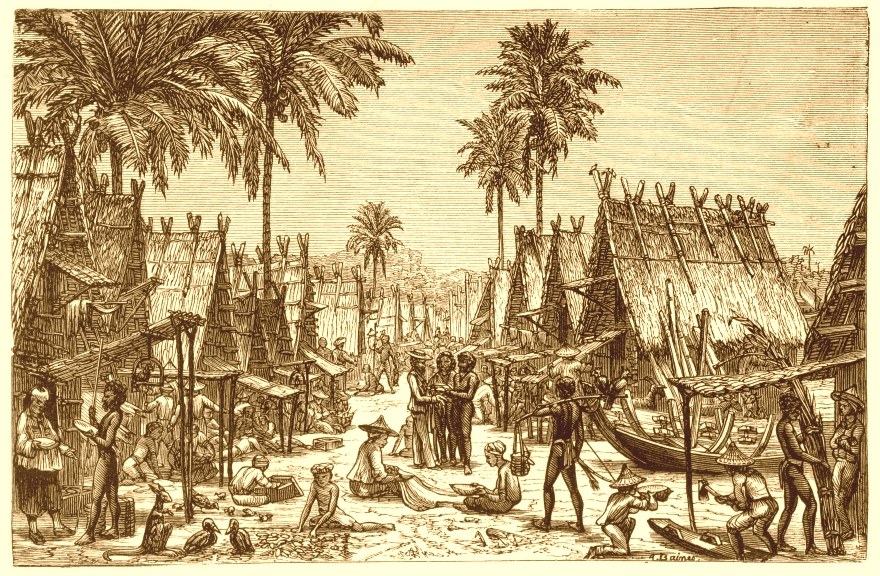..... On the 8th of January, 1857, I landed at Dobbo, the trading settlement of the Bugis and Chinese, who annually visit the Aru Islands. It is situated on the small island of Wamma, upon a spit of sand which projects out to the north, and is just wide enough to contain three rows of houses. Though at first sight a most strange and desolate-looking place to build a village on, it has many advantages. There is a clear entrance from the west among the coral reefs that border the land, and there is good anchorage for vessels, on one side of the village or the other, in both the east and west monsoons. Being fully exposed to the sea-breezes in three directions it is healthy, and the soft sandy heath offers great facilities for hauling up the praus, in order to secure them from sea-worms and prepare them for the homeward voyage. At its southern extremity the sand-bank merges in the beach of the island, and is backed by a luxuriant growth of lofty forest. The houses are of various sizes, but are all built after one pattern, being merely large thatched sheds, a small portion of which, next the entrance, is used as a dwelling, while the rest is parted oft; and often divided by one or two floors, in order better to stow away merchandise and native produce...........
